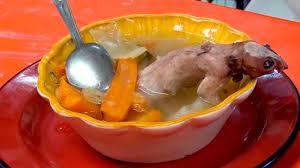When I first read about trovants, I couldn’t believe they were real. They sounded like objects Captain Kirk and his crew would discover on an alien planet. Strange rocks that grow when it rains and move from one place to another without any assistance. Totally sci-fi, right?
As I kept reading about them, I discovered that trovants aren’t a part of science fiction, they are just an amazing geological phenomena. These stones seem to grow as if they are alive, even though they’re not. They are found in the small Romanian village of Costesti. The word ‘trovant’ is a synonym for the German term “Sandsteinkonkretionen” (try saying that really fast), which means ‘cemented sand’.
Cemented sand – that’s a strange name for a rock, isn’t it? But that’s what trovants are – spherical shapes of sand that appeared on earth after powerful seismic activity. In fact, the earthquakes that brought these strange rocks into existence are said to have occurred 6 million years ago. Trovants grow when they come into contact with water. Stones as small as six to eight millimeters end up as large as six to ten meters. Some of them even move on their own. When cut, trovants reveal spherical and ellipsoidal rings, similar to tree trunks.









